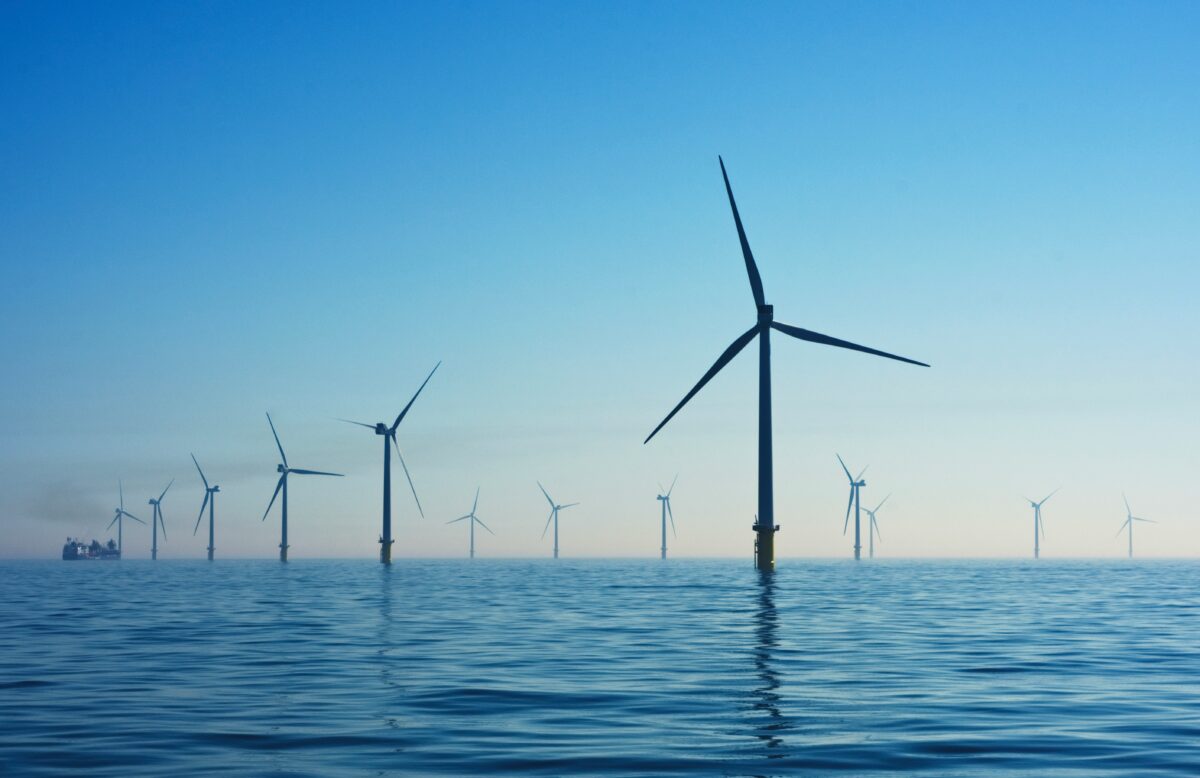In a press conference on March 29, President Biden announced plans for a new Wind Energy Area in the New York Bight, an area of shallow water off the coasts of New Jersey and Long Island. When established, this project will create good-paying union jobs, strengthen the domestic supply chain, and support critical research, development, and data-sharing.
While there are many benefits to Biden’s proposal, people still raise some concerns. For example, there are those who are worried that renewable energy projects take jobs away and leave people unemployed. However, not only would this Wind Energy Area project introduce new jobs, it would also strengthen the United States economy. From 2022-2030, the period of time the project would most likely take to complete, up to 25,000 development and construction jobs would be created as well as an additional 7,000 jobs in communities to support the project. Even when the project is complete there will be maintenance and operation jobs that need to be filled.
This project’s goal is to deploy 30 gigawatts of energy by 2030, protect biodiversity, and promote ocean co-use. This would also trigger more than $12 billion per year in capital investment. These 30 gigawatts would generate enough power to reach more than 10 million American homes. This would also avoid the emissions of 78 million metric tons of carbon dioxide
Biden’s proposed plan would not be the United States’ first offshore wind farm. In 2014, Deepwater Wind, an offshore wind energy development group, was granted approval to construct a wind farm off the coast of Rhode Island. By mid-2016, wind turbine installation began and by December 2016, Block Island Wind Farm was fully operational.
While the Block Island Wind Farm is a smaller operation than Biden’s New York Bight proposal, it is evidence that the project would be worthwhile. During the Block Island Wind Farm’s construction, approximately 300 jobs were generated. The electricity produced reaches around 17,000 households, and 800,000 metric tons of carbon dioxide emissions will be offset after 20 years.
The New York Bight project will only be efficient and cost effective, however, if wind speeds are sufficient. Without substantial wind, offshore turbines will either spin too slowly or not at all. A form of solar energy, wind is caused by the combination of three concurrent events: uneven heating of the earth’s atmosphere, the earth’s rotation, and the irregularity of the earth’s surface. These forces tend to be the strongest offshore. With an annual average of wind speeds ranging between 24.6 to 25.7 mph, the New York Bright ranks among the highest for the potential of efficient and effective wind turbines in the United States.
While the New York Bight already has strong winds, the ability to deliver large amounts of clean and renewable energy increases when the size of the turbines increase. The smallest wind turbines are 15 meters tall. The tallest, meanwhile, stand at 164 meters and have blades the length of a football field. To put this in perspective, the Statue of Liberty is 42 meters tall and the Washington Monument is 169 meters tall. Offshore turbines tend to range between 80 meters to 164 meters tall.
Unlike onshore turbines, transportation of offshore turbine components is relatively easy; ships and barges are used rather than trucks, which must navigate narrow roads and tunnels. It is for this reason that the size of offshore turbines can be scaled up and have the potential to be more efficient.
When there is a satisfactory amount of wind, the turbine’s blades are able to spin. Flowing across them, the wind causes the air pressure to drop on one side of the blade. This difference in pressure creates lift and drag. Since the force of lift is stronger than that of drag, the rotor spins, causing a generator to spin as well. When this generator spins, electricity is created.
Unfortunately, wind turbines aren’t without their faults. For one, the turbines can degrade habitats for wildlife; birds and bats have been known to fly into the blades, or get sucked into them, and have been subsequently killed. Wind turbines also contribute to sight and noise pollution.
Compared to fossil fuels, however, wind turbines are the clear winner. In terms of fossil fuels, they pollute the environment and release large amounts of greenhouse gases. Mining and drilling can also be unsafe and detrimental to human health.
Wind turbines are also a preferred renewable energy source because they are less harmful to the environment and habitats. For example, when compared to man-made dams, which generate energy from the mechanical power of flowing water, turbines are more environmentally friendly. For one, dams have the potential to disrupt local ecosystems and degrade habitats. Additionally, when a new dam is built, people in neighboring towns are often forced to relocate and uproot their lives.
Wind turbines are one of our best options if we wish to reduce our fossil fuel use, decrease greenhouse gas emissions, and switch to the use of clean, renewable energy.
Sources:
Block island wind farm. (2021, April 16). Retrieved April 17, 2021, from https://www.power-technology.com/projects/block-island-wind-farm/
Environmental impacts and siting of wind projects. (n.d.). Retrieved April 17, 2021, from https://www.energy.gov/eere/wind/environmental-impacts-and-siting-wind-projects
FACT sheet: Biden ADMINISTRATION Jumpstarts offshore wind energy projects to create jobs. (2021, March 29). Retrieved April 17, 2021, from https://www.whitehouse.gov/briefing-room/statements-releases/2021/03/29/fact-sheet-biden-administration-jumpstarts-offshore-wind-energy-projects-to-create-jobs/
How do wind turbines work? (n.d.). Retrieved April 17, 2021, from https://www.energy.gov/eere/wind/how-do-wind-turbines-work
Miller, B. (2020, March 12). 17 Biggest Advantages and Disadvantages of Dams. Green Garage. https://greengarageblog.org/17-biggest-advantages-and-disadvantages-of-dams.
Top 10 things you didn’t know about offshore wind energy. (n.d.). Retrieved April 17, 2021, from https://www.energy.gov/eere/wind/articles/top-10-things-you-didnt-know-about-offshore-wind-energy
Top 10 things you didn’t know about wind power. (n.d.). Retrieved April 17, 2021, from https://www.energy.gov/eere/wind/articles/top-10-things-you-didnt-know-about-wind-power

